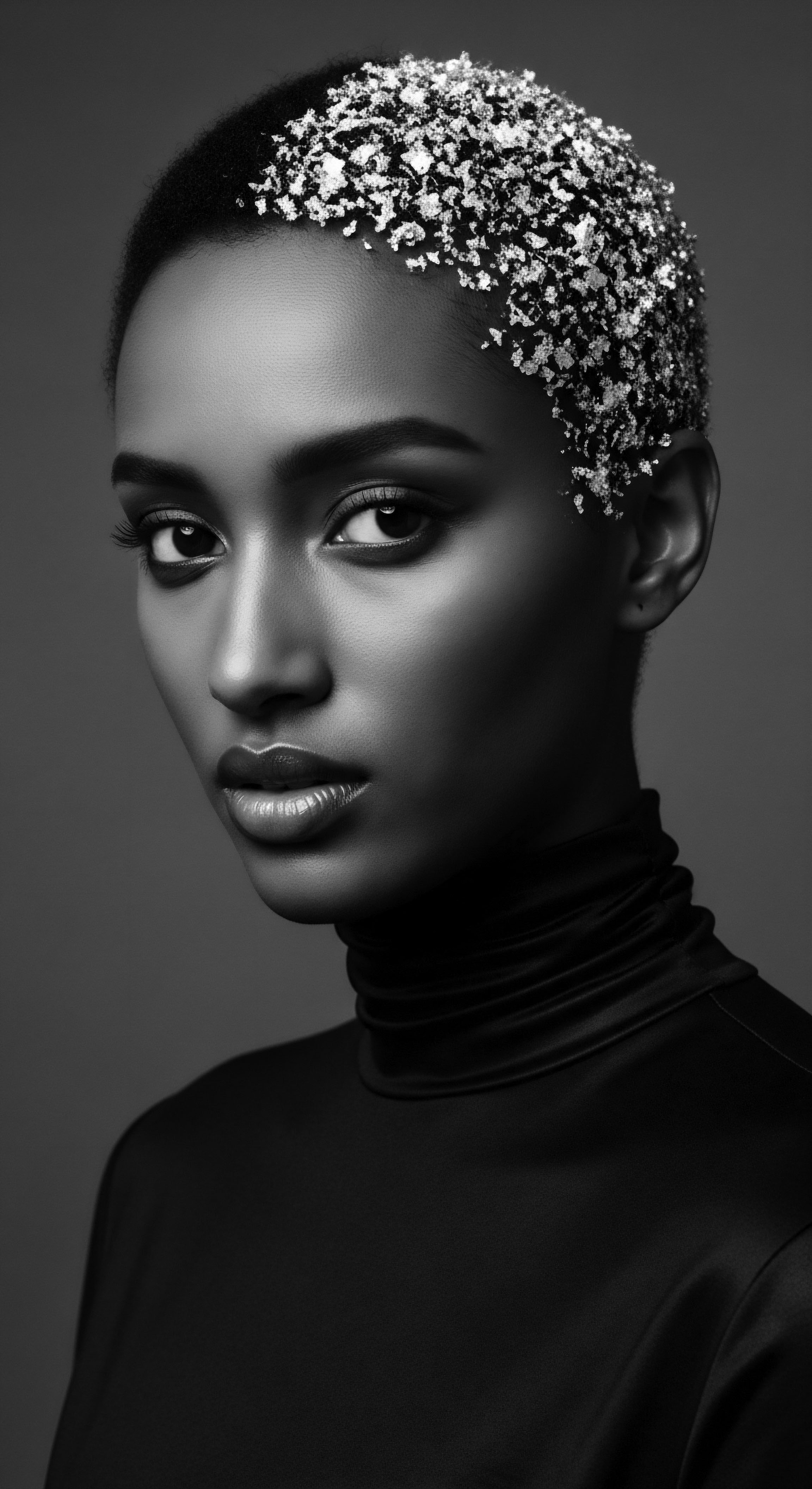
Roots
The whispers of the past, carried on the very wind that rustled through ancestral villages, often speak of hair—not as mere adornment, but as a living chronicle. For those whose lineage traces through the vibrant tapestries of Africa and its diaspora, textured hair stands as a testament, a profound genetic inheritance. It is a crown, yes, but also a resilient narrative, each curl, coil, and kink a deliberate stroke of nature’s brush.
The question of whether traditional hair oils truly strengthen this unique fabric of being is not simply a query of molecular bonds or epidermal integrity; it is an invitation to listen closely to the echoes from the source, to feel the wisdom passed down through generations. To understand its truth, we must journey back to the very foundations, to the elemental biology of textured hair, steeped in a heritage of care that stretches far beyond modern cosmetology.
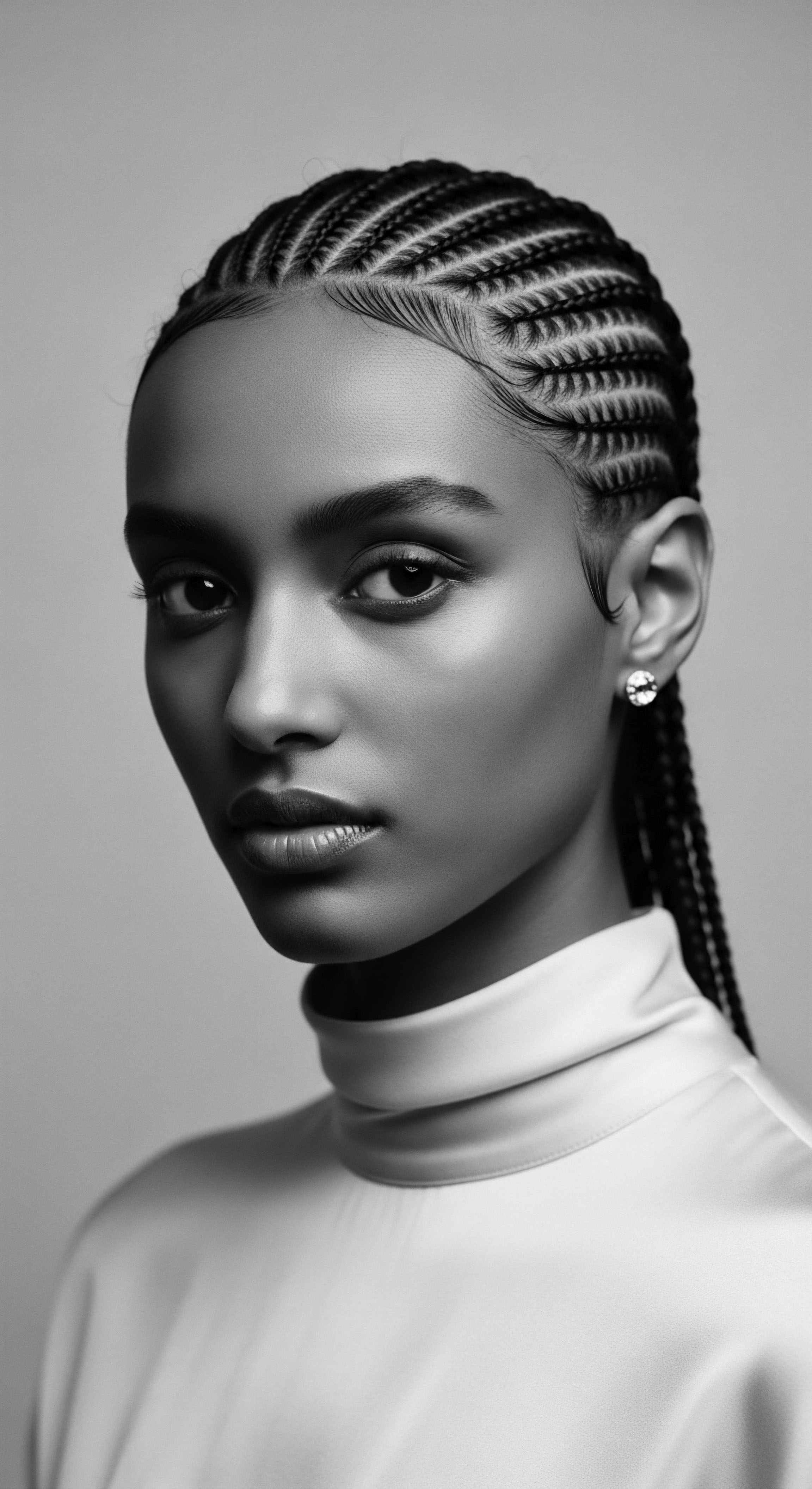
The Sacred Architecture of Textured Hair
Textured hair, in its myriad forms, possesses a distinct anatomical blueprint, a deviation from the cylindrical simplicity often associated with straight hair. Its elliptical or flat follicle shape is the genesis of its characteristic curl pattern, whether a gentle wave or a tightly coiled helix. This unique architecture inherently presents structural considerations ❉ the bends and curves of the hair shaft represent points of natural vulnerability, where the cuticle layers, like tiny overlapping shingles, can lift, leading to increased porosity and potential moisture loss. The journey of natural oils along such a winding path is also different, necessitating specific application and understanding.
Ancestral practices, particularly in various West African cultures, understood these nuances instinctively. They recognized that while the hair itself seemed robust, its intricate form required a nurturing touch. The practice of oiling, often with concoctions derived from local flora, was not arbitrary; it was a deeply intuitive response to the very biology of the hair, aiming to seal moisture, impart flexibility, and mitigate breakage. This understanding predates modern scientific nomenclature, yet its efficacy speaks to a profound observational wisdom, a heritage of empirical knowledge built over centuries.
Textured hair, with its unique follicular shape and inherent structural bends, necessitates a historically informed approach to strengthening, recognizing its distinct anatomical needs.
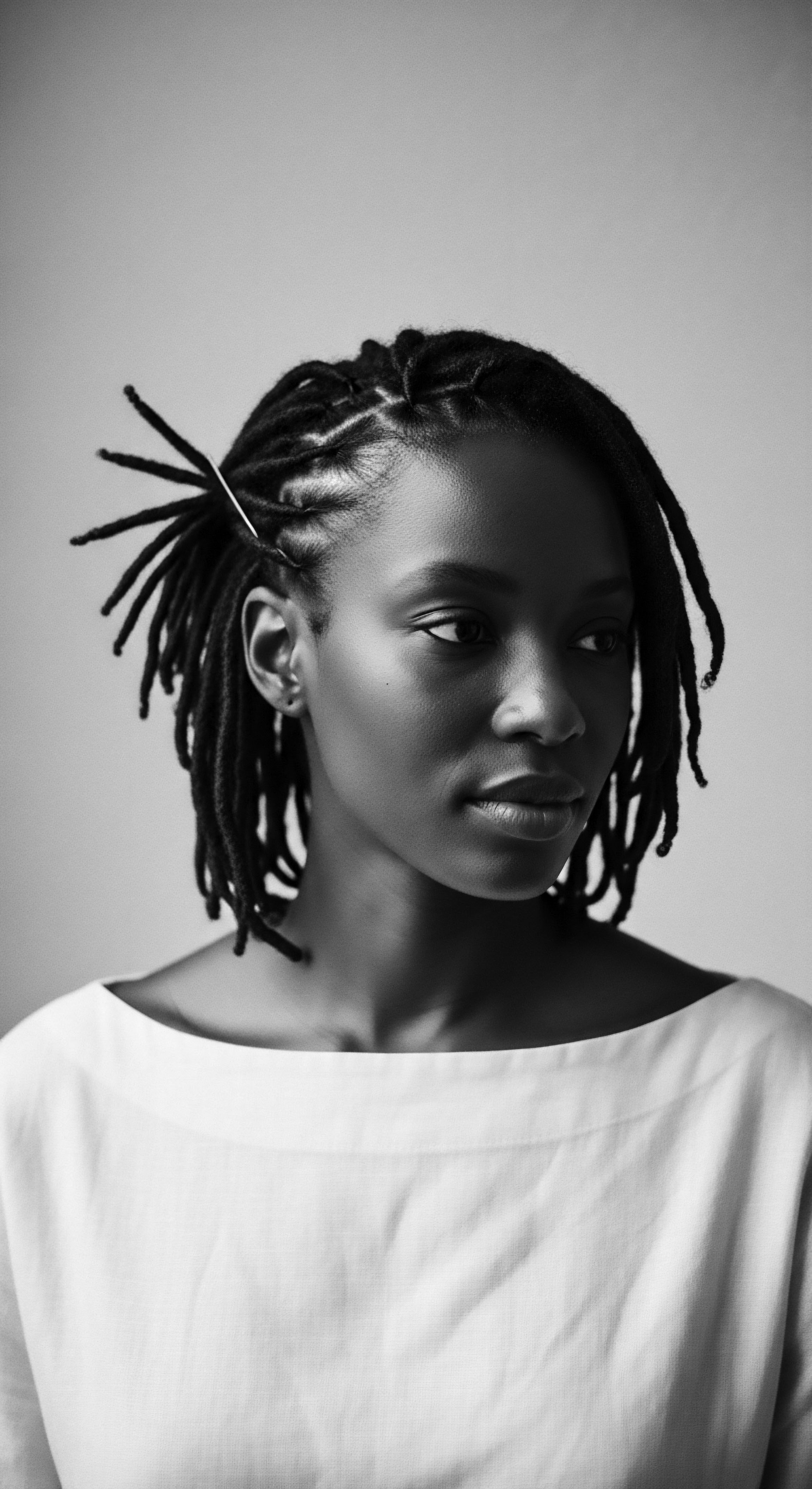
Understanding Hair’s Internal Scaffold
Beneath the cuticle, the hair’s external shield, lies the cortex—the primary determinant of strength and elasticity. This fibrous core is composed of keratin proteins, long chains that coil into protofibrils, microfibrils, and macrofibrils, all bound together by disulfide bonds. These bonds are the hair’s internal scaffold, conferring its tensile strength.
Damage, whether mechanical (like vigorous combing), chemical (relaxers), or environmental (sun exposure), can compromise these bonds, leading to weakness and breakage. For textured hair, the manipulation required for styling and maintenance, combined with environmental factors inherent to diverse ancestral homelands, often presented greater challenges to maintaining cortical integrity.
Traditional hair oils, when examined through this lens, did not magically alter the keratin structure or create new disulfide bonds. Instead, their benefit lay in their ability to indirectly support the cortex by acting upon the cuticle. A healthy, smooth cuticle reduces friction, prevents excessive swelling and shrinking of the hair shaft (which stresses the cortical bonds), and minimizes protein loss.
By creating a protective barrier and helping to retain internal moisture, certain oils could, in effect, allow the cortex to remain more robust, less prone to the stressors that lead to protein degradation and breakage. This protective function is a cornerstone of the ancestral wisdom embedded in their usage.

The Language of Textured Hair ❉ A Heritage Lexicon
The classifications we use today for textured hair, often numerical and alphabetical (3A, 4C, etc.), are relatively recent inventions. Yet, throughout history, diverse communities developed their own rich lexicons to describe the spectrum of hair textures within their populations, terms often imbued with cultural significance and deep respect for the hair’s unique attributes. These descriptors were often tied to familial lineage, community identity, and even spiritual beliefs. Understanding these historical terms allows us to grasp the breadth of traditional care practices, which were tailored to the specific characteristics of what we now quantify.
The deep reverence for hair in many African societies meant that terms extended beyond mere physical description. Hair was understood as a conduit, a source of power, wisdom, and ancestral connection. The choice of oils and their application rituals were therefore not just cosmetic acts, but part of a larger continuum of self-care and cultural affirmation.
- Tignon ❉ A headwrap with roots in 18th-century Louisiana, worn by free and enslaved Black women, often concealing hair but also serving as a vibrant expression of identity and defiance against discriminatory sumptuary laws. Its use often involved traditional oils to prepare and protect hair before wrapping.
- Cornrows ❉ A braiding technique, originating in various African cultures, where hair is braided very close to the scalp in continuous, raised rows. Historically, this style, often prepared with oils, served practical, ceremonial, and social purposes, denoting age, marital status, or tribal affiliation.
- Locs ❉ Hair intentionally matted and intertwined to form rope-like strands, with deep historical and spiritual significance in many African and Afro-diasporic traditions. The formation and maintenance of locs often relied on specific oils and butters, understood as essential for their health and spiritual connection.
The nomenclature of traditional hair care practices, while lacking the precise scientific vocabulary of today, was profoundly experiential. The ‘feel’ of the hair, its ‘spring,’ its ‘lustre’ were the metrics, guiding the selection of botanicals and the frequency of application. The strengthening perceived from these oils was a lived experience, not a laboratory finding, a testament to inherited wisdom.

Ritual
The act of caring for textured hair, particularly within Black and mixed-race communities, has always transcended mere grooming; it is a ritual, a profound connection to self, family, and lineage. From the intricate braiding patterns of ancient West Africa to the communal straightening sessions of early 20th-century American homes, hair care has been an art, a science, and a social anchor. Within this vibrant heritage, traditional hair oils occupied a central, often unspoken, role, not just for styling, but for their perceived ability to impart health and strength. To truly understand if these oils strengthen textured hair, we must immerse ourselves in the historical artistry and cultural context of their application.
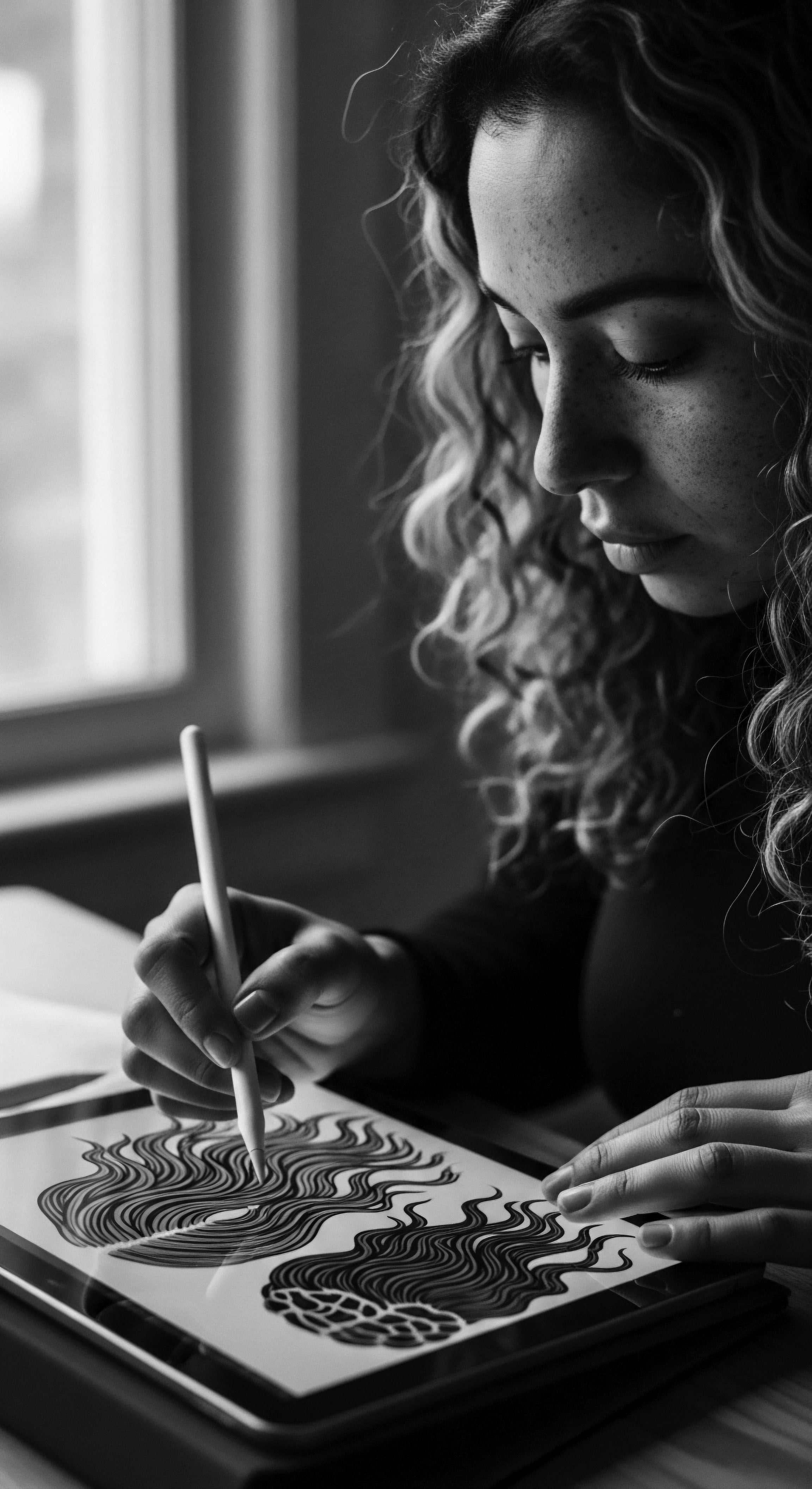
Oiling as a Foundation for Protective Styling
Across the African continent and throughout the diaspora, protective styling techniques were, and remain, paramount for safeguarding textured hair. Styles like braids, twists, and cornrows, by minimizing daily manipulation and exposure to environmental elements, inherently preserve the hair’s integrity. Yet, these styles were rarely created on dry, untreated hair.
Instead, a foundational step involved the deliberate application of oils and butters, often warmed, massaged into the scalp, and worked through the hair strands. This ritual, deeply ingrained in ancestral wisdom, was understood to provide a necessary cushion, a vital lubricant for the hair.
The strengthening quality of these oils, in this context, was multi-layered. They eased the tension of braiding, reducing strain on the hair follicle, a common cause of breakage and thinning over time. They provided a slip that allowed for smoother detangling, minimizing mechanical damage that could otherwise fragment delicate strands.
Moreover, the oils created a humectant seal, holding in the water that is critical for hair elasticity, thereby making the hair more supple and less prone to snapping during styling. This practical application demonstrates an intuitive understanding of hair mechanics, where strength is not just about rigidity, but about resilience and flexibility.

How Did Traditional Oils Assist Styling and Definition?
The artistry of textured hair styling relies on definition and hold, and traditional oils contributed significantly to both. Consider the meticulous work of defining curls in naturally coily or kinky hair. After washing, the hair would be softened with water, then carefully sectioned and coated with oils.
The oils, ranging from palm oil in West Africa to coconut oil in the Caribbean, provided the density and weight necessary to clump curls, enhancing their natural pattern. This definition, in turn, often meant less frizz and less mechanical manipulation throughout the day, contributing indirectly to the hair’s preserved strength.
The efficacy of these oils in styling also extends to traditional “heat” methods. Before the advent of modern hot combs, some communities used warm oils and heated implements (like stones or sticks) to stretch or straighten hair. While these methods carried their own risks, the oils acted as a thermal buffer, reducing direct heat damage.
They imparted a sheen and a soft texture that was both aesthetically pleasing and indicative of well-cared-for hair. The perceived “strength” here was not merely structural, but also visual—hair that looked healthy and vibrant.
| Aspect Source of Oils |
| Traditional Practice (Pre-20th Century) Locally harvested botanical extracts (e.g. shea butter, palm oil, coconut oil from indigenous plants). Often prepared fresh or through community processes. |
| Modern Application (21st Century) Commercially produced, refined oils (e.g. argan oil, jojoba oil). May contain synthetic additives, preservatives, or blends. |
| Aspect Method of Application |
| Traditional Practice (Pre-20th Century) Communal rituals, warming oils over gentle heat, massaging into scalp and strands, often alongside detangling and braiding. |
| Modern Application (21st Century) Personalized regimens, direct application of oils, often combined with leave-in conditioners or stylers, focus on ends and scalp. |
| Aspect Primary Perception of "Strength" |
| Traditional Practice (Pre-20th Century) Resilience, elasticity, reduced breakage during styling, protection from elements, visual health, cultural significance. |
| Modern Application (21st Century) Reduced frizz, moisture retention, improved elasticity, thermal protection, enhanced shine, sometimes formulated with protein-like compounds. |
| Aspect Tools Used |
| Traditional Practice (Pre-20th Century) Fingers, wide-toothed combs crafted from wood or bone, simple picks, various natural implements for partings. |
| Modern Application (21st Century) Wide-tooth combs, detangling brushes, heat tools (blow dryers, flat irons), microfibre towels, application bottles. |
| Aspect The essence of oiling textured hair has persisted, adapting tools and specific botanicals, yet maintaining its core function of safeguarding hair integrity. |
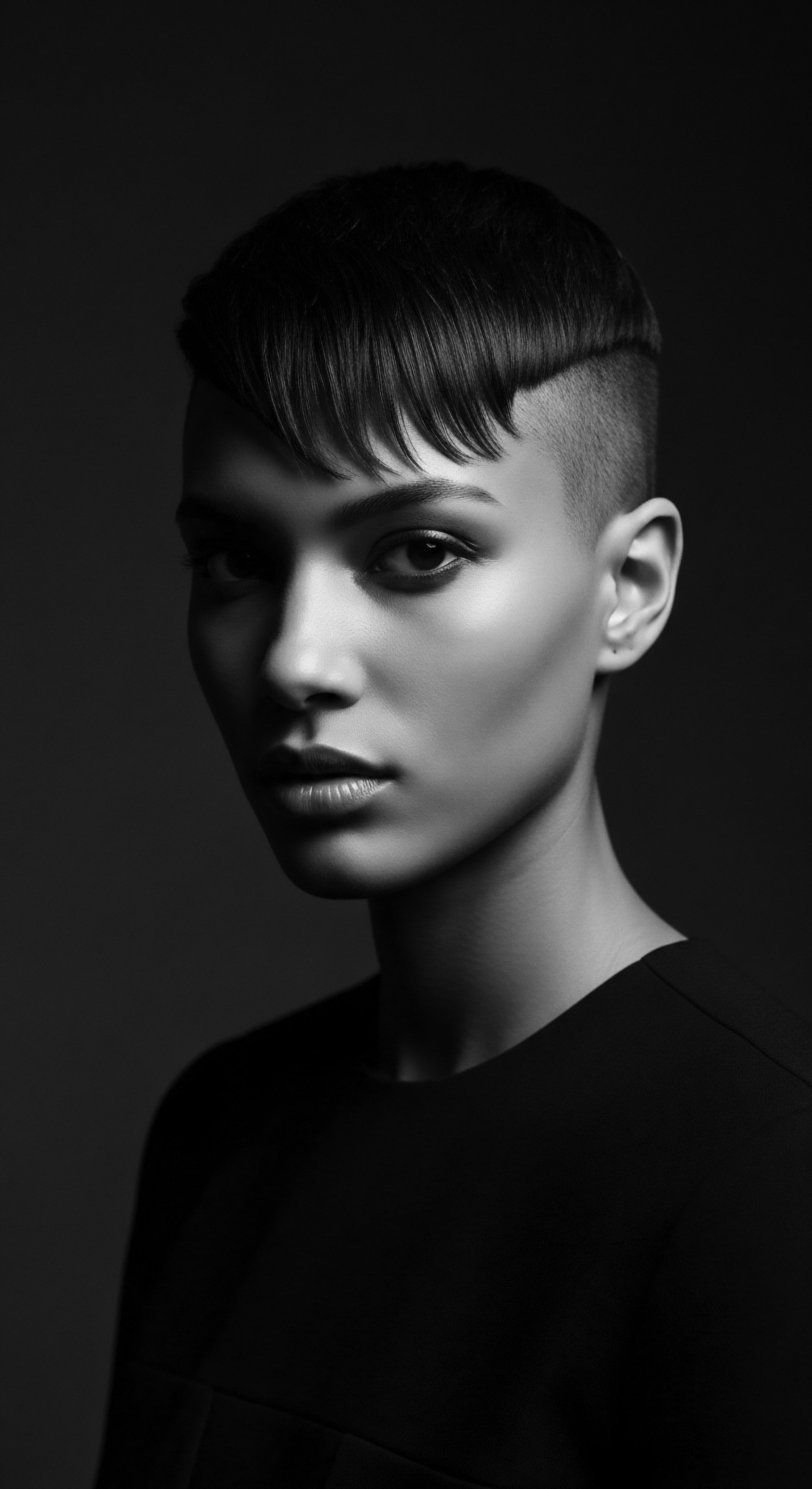
The Toolkit of Heritage ❉ Oils and Their Companions
The effectiveness of traditional oils in strengthening textured hair was also deeply intertwined with the other tools and techniques used in ancestral hair care. It was a holistic system. Wide-toothed combs, often crafted from animal bone or wood, were used gently after hair was softened with water and oiled, minimizing snagging and breakage.
The slow, deliberate nature of these grooming rituals, often performed by elders or community members, minimized the aggressive manipulation that modern fast-paced routines can sometimes induce. The oils lubricated the process, allowing tools to glide rather than tear.
Moreover, the communal aspect of hair care meant shared knowledge and shared hands. The hands that applied the oils were often experienced, understanding the nuances of different hair types within the community. This tactile wisdom, passed down through observation and practice, ensured that oils were applied with precision, targeting areas prone to dryness or breakage, such as the ends. This collective expertise, paired with the properties of the oils, created an environment where textured hair could truly thrive, maintaining its integrity and strength through consistent, thoughtful care.
The historical use of traditional oils for textured hair transcended mere lubrication, extending into culturally significant styling techniques and collective care rituals.
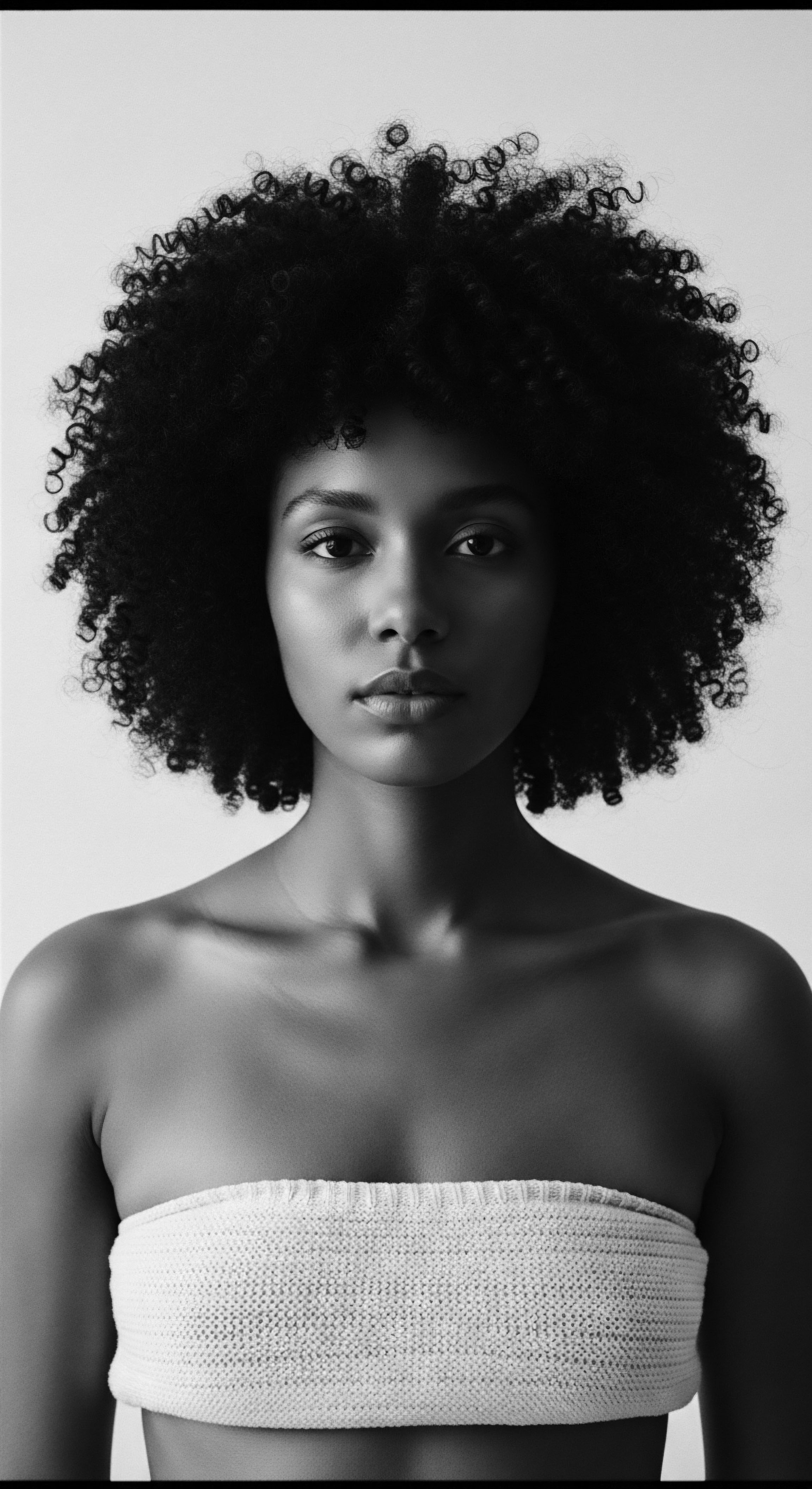
Relay
The journey of textured hair care, from ancient practices to contemporary understanding, is a relay of wisdom passed down through generations. Traditional hair oils, as central figures in this historical narrative, invite a deeper inquiry into their genuine capacity to strengthen textured hair. This is not a superficial question, but one that demands a synthesis of ancestral knowledge, modern scientific discovery, and the living experiences of Black and mixed-race individuals. The strengthening effect, we discover, is a complex interplay of physical protection, sustained moisture, and the profound psychological uplift inherent in practices rooted in heritage.

Are Traditional Hair Oils Directly Structurally Strengthening?
The direct answer, from a strictly molecular biology perspective, is that traditional hair oils do not inherently possess the capacity to reform disulfide bonds within the hair’s cortex or directly alter the protein structure of keratin in a strengthening manner. Hair strength, in its purest scientific definition, refers to the tensile integrity of the keratin matrix. Oils, being lipids, are unable to penetrate the inner cortex in significant amounts to enact such a transformation. However, to stop at this answer would be to profoundly misunderstand the ancestral wisdom and the holistic nature of “strengthening” as perceived through a heritage lens.
The true power of traditional oils lies in their external and indirect contributions to hair health, which cumulatively result in hair that is more resilient and thus, effectively “stronger” in daily life. Imagine a venerable old tree, its core sturdy, but its bark cracked and porous, leaving it vulnerable to the elements. An oil, in this analogy, is akin to a protective balm for the bark, sealing it, preventing further erosion, and allowing the tree’s natural strength to endure. For textured hair, which is inherently prone to dryness and cuticle lifting due to its coily structure, this external protection is paramount.
Consider the work of chemical engineer, Dr. Leslie S. Jones, whose research on hair fiber mechanics illuminates the importance of external conditioning agents for hair, especially those with complex structures. She points out that the outermost cuticle layer is the first line of defense against damage.
When this layer is compromised, the hair becomes susceptible to moisture loss, protein degradation, and frictional wear. Traditional oils, particularly those rich in fatty acids like coconut oil, can coat the hair shaft, reducing the coefficient of friction, minimizing cuticle lift, and preventing hygral fatigue—the weakening of hair through repeated swelling and shrinking from water absorption and desorption (Jones, 2013). This protective shield, while not rebuilding the hair’s core, significantly preserves its existing strength.
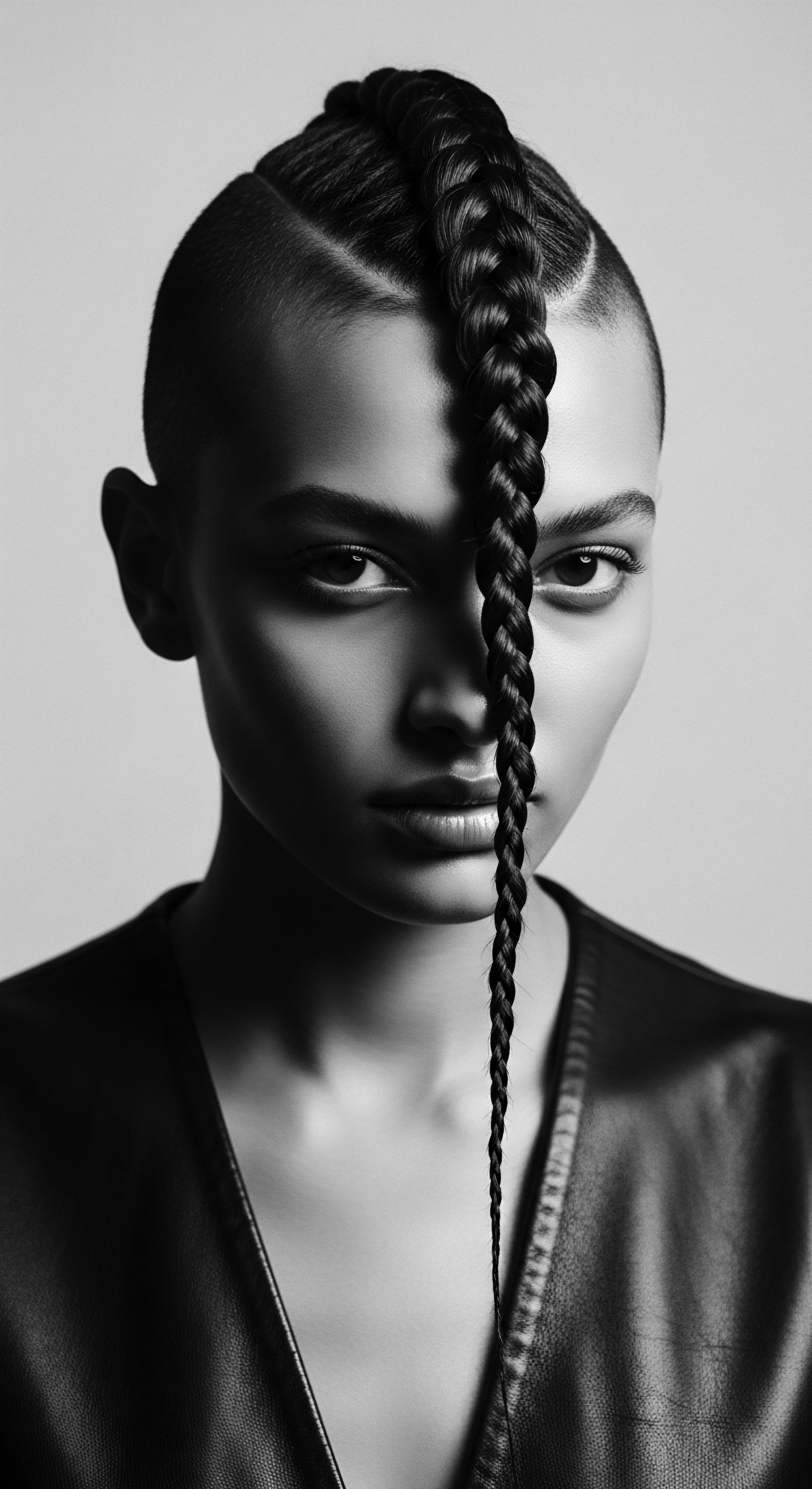
How Does Oil Application Impact Hair’s Moisture Balance?
The maintenance of optimal moisture balance is a critical, often underestimated, aspect of hair strength for textured strands. Dry hair is brittle hair; it snaps under minimal tension. Traditional hair oils, especially those with occlusive or semi-occlusive properties, create a hydrophobic barrier on the hair surface, sealing in the water that the hair has absorbed.
This process is akin to a careful gardener watering a plant and then mulching the soil to prevent evaporation. The oil doesn’t add moisture itself, but it significantly reduces the rate at which existing moisture escapes.
The ancestral application of oils after washing, or even on dampened hair, demonstrates a keen observational understanding of this principle. The hair was saturated with water, then the oil was applied to lock it in. This sustained moisture, in turn, keeps the hair elastic and pliable, making it less prone to breakage during styling, detangling, and daily manipulation.
A hair strand that can stretch and return to its original state without breaking is a strong strand. Traditional oils, through their role in moisture retention, directly contribute to this functional strength, bridging ancient practice with modern scientific understanding.
- Coconut Oil ❉ Historically prevalent in tropical regions, known for its ability to penetrate the hair shaft and reduce protein loss (Rele & Mohile, 2003). Its molecular structure allows it to interact with hair proteins, making it a valuable agent for protecting the hair’s internal structure from washing-induced swelling.
- Shea Butter ❉ A staple across West Africa, this rich butter forms a protective barrier, reducing moisture loss and adding elasticity, guarding against environmental stressors. Its non-greasy texture (when refined) makes it ideal for sealing.
- Castor Oil ❉ Widely used in various African and Caribbean cultures for its thick consistency, it provides excellent scalp conditioning and a strong occlusive layer on the hair, limiting breakage from mechanical stress and dryness.

What Is The Psychosocial Resonance of Oiled Hair?
Beyond the biophysical, the concept of “strengthening” textured hair through traditional oils extends into the psychosocial realm, a domain deeply rooted in heritage. The act of oiling, often a communal affair, was a moment of connection, teaching, and affirmation. It reinforced a sense of self-worth and belonging. When hair was cared for with these traditional methods, it not only gained physical resilience but also became a vibrant expression of identity, a symbol of pride against historical narratives of subjugation and devaluation of Black aesthetics.
The perception of strength in this context is intrinsically linked to the resilience of a people. Hair that could withstand daily life, that looked healthy and vibrant, became a subtle act of defiance and self-preservation. It spoke of ancestral wisdom, of the ability to thrive despite adversity.
The consistent use of traditional oils, passed down through generations, solidified this connection, ensuring that the legacy of care continued, nourishing not just the hair, but the spirit. This deep cultural and psychological resonance is an often-overlooked yet critical dimension of how traditional oils genuinely “strengthen” textured hair within its broader heritage.
The true strengthening power of traditional hair oils for textured hair lies in their comprehensive contribution to hair integrity through external protection, moisture retention, and profound cultural affirmation.
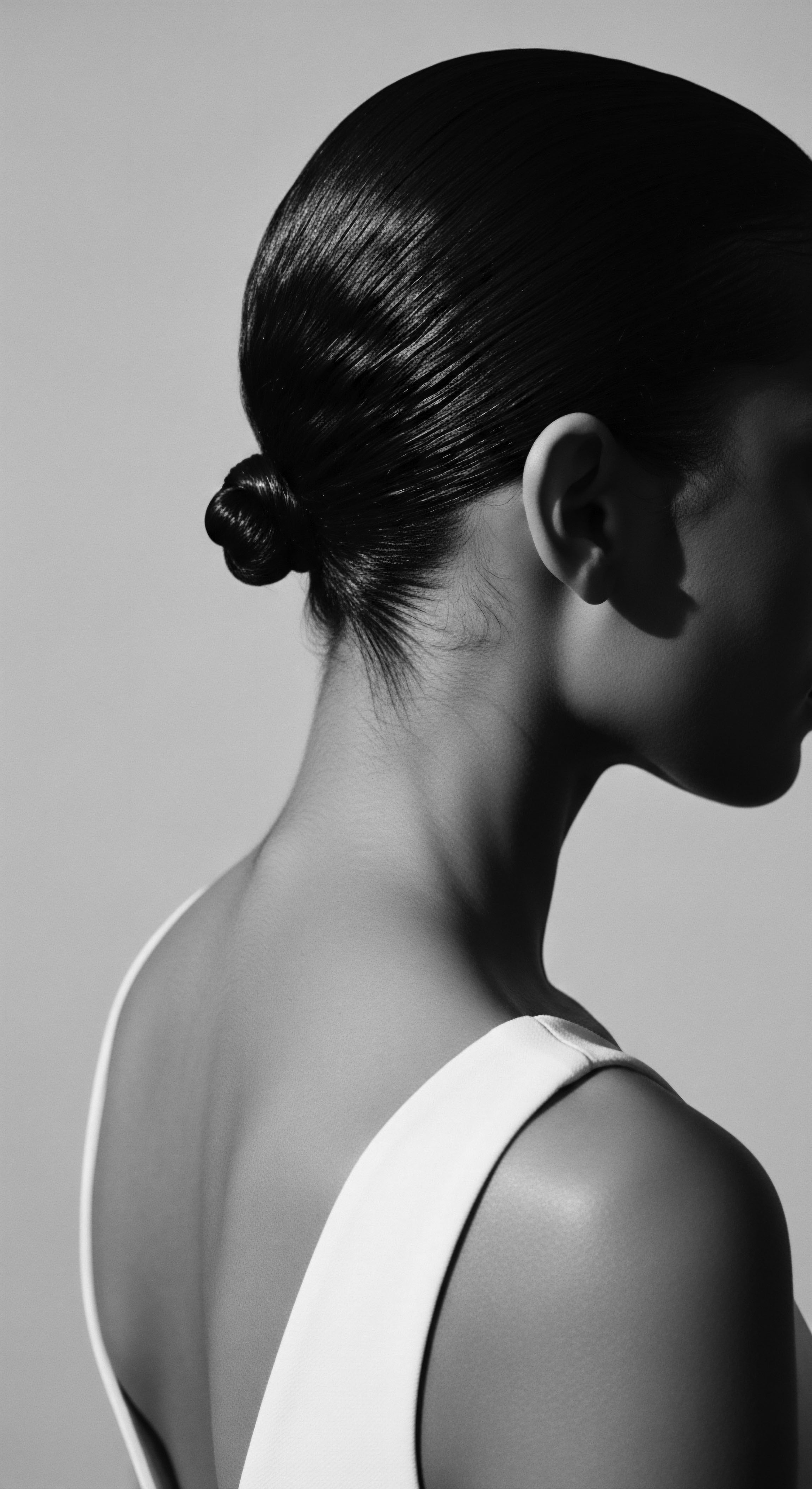
Reflection
As we step back from the granular details of cuticle layers and fatty acid chains, a larger truth surfaces, one that pulses with the rhythm of generations. The inquiry into whether traditional hair oils genuinely strengthen textured hair ultimately transcends simple yes or no answers. It invites us into a profound meditation on the “Soul of a Strand,” recognizing that hair, particularly textured hair, is never just protein and pigment. It is a living, breathing archive of identity, resistance, and ancestral wisdom.
The oils, in their ancient wisdom and continued relevance, serve as a gentle reminder ❉ true strength is not merely about rigidity, but about resilience, about the ability to bend without breaking, to retain vitality against the odds. This echoes the enduring spirit of the communities from which these practices spring. From the hands that first crushed seeds for their precious elixirs, to the contemporary hands that reach for these same botanical treasures, a continuous thread of care and reverence extends.
The legacy of textured hair care, nourished by these traditional oils, stands as a testament to ingenuity, adaptation, and unwavering self-love. It is a living library, each practice a page, each strand a sentence, collectively telling a story of beauty, survival, and empowerment. To engage with traditional hair oils is to partake in this heritage, to honor the journey, and to continue the relay of wisdom for future generations. It is, in its deepest sense, a celebration of hair’s unbound helix, a symbol of freedom and connection to a lineage of unparalleled resilience.

References
- Jones, Leslie S. (2013). Hair Fiber Science ❉ The Complete Guide to Hair Care and Health. CRC Press.
- Rele, Arti S. & Mohile, R. B. (2003). Effect of mineral oil, sunflower oil, and coconut oil on prevention of hair damage. Journal of Cosmetic Science, 54(2), 175-192.
- Thornwell, Victoria W. (2009). Hair Story ❉ Untangling the Roots of Black Hair in America. St. Martin’s Press.
- Byrd, Ayana D. & Tharps, Lori L. (2014). Hair Story ❉ Untangling the Roots of Black Hair in America (Revised Edition). St. Martin’s Griffin.
- Akerele, O. (1991). Traditional Medicine in Africa ❉ A Global Perspective. African World Press.
